Pets are our adorable companions, often communicating through behaviors that tug at our heartstrings. However, some of these seemingly cute actions might be signaling underlying issues that need attention. As caretakers, it’s crucial to decode these behaviors to ensure our furry friends remain healthy and happy. Whether you’re a seasoned pet parent or new to the pack, knowing when cute is more than just cute can make all the difference. Here are 13 pet behaviors that may seem harmless but could be warning signs of something more serious.
1. Excessive Licking

Your pet’s constant licking might seem like a quirky, affectionate gesture, but it can indicate anxiety or allergies. Pets often lick themselves or objects excessively when they feel anxious or stressed. According to Dr. Karen Becker from Healthy Pets, this behavior could also signify skin allergies or discomfort. If your pet frequently licks a specific area, it might be time to consult a vet. Ignoring this could lead to more severe skin issues or reveal underlying anxiety disorders.
On the other hand, licking can also be a compulsive behavior similar to how some people bite their nails. If your pet is licking to the point of causing bald spots or skin irritation, it’s essential to intervene. Try engaging them in activities or providing chew toys to distract from the habit. Be observant about when the licking occurs—after a stressful event or during meal times? Understanding the pattern can help address the root cause effectively.
2. Tail Chasing
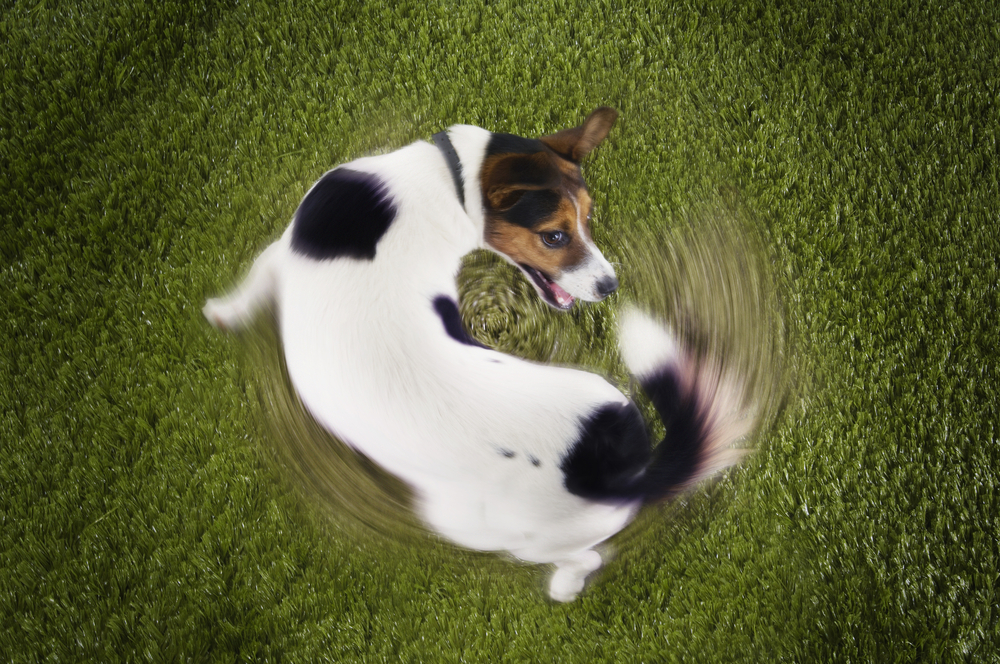
Watching your pet whirl around chasing their tail can be a comedic spectacle. However, this behavior might not always be as innocent as it appears. Tail chasing can sometimes signal boredom, a lack of physical activity, or even a neurological issue. If your pet is engaging in this behavior frequently and obsessively, it’s time to pay attention. Ensure your pet receives enough daily exercise and mental stimulation to keep them healthy and content.
Moreover, tail chasing can also point to issues like flea infestations or anal gland problems. If your pet is chasing their tail and also seems to be biting or scratching at it, a vet visit is in order. A thorough check-up can rule out any physical causes or discomfort. Consider expanding their playtime or introducing new activities to engage their mind and body. A happy, well-exercised pet is less likely to resort to tail chasing as a form of entertainment or relief.
3. Zoomies
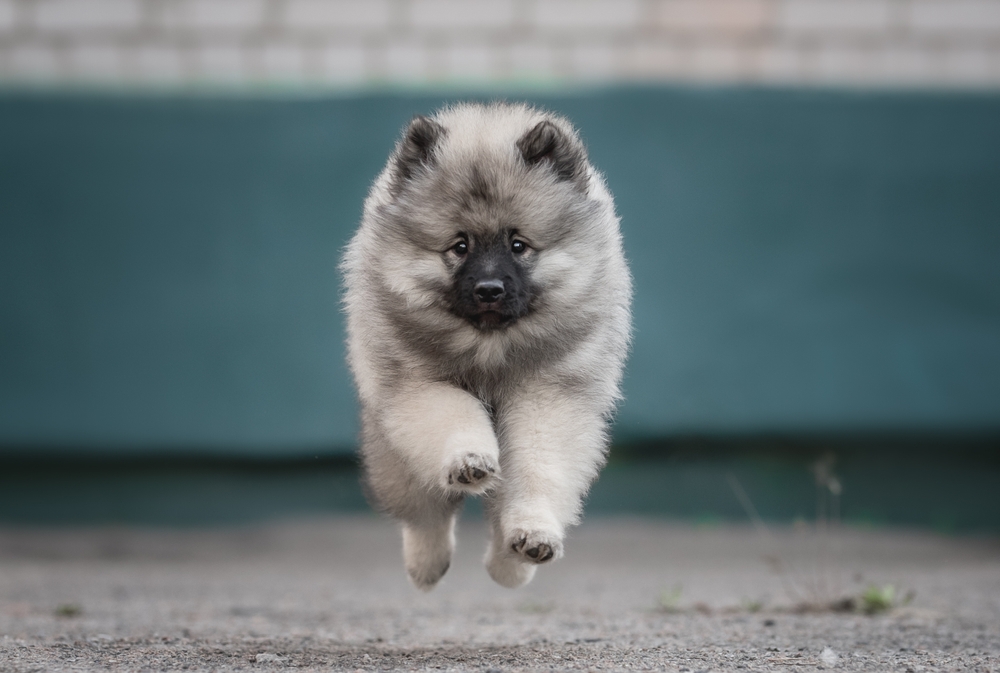
We’ve all seen it—a sudden burst of energy sends your pet zooming around the room. While this might appear as a cute, playful moment, it can sometimes indicate pent-up energy or stress. Pablo Pascua from PetMD notes that these sudden energy surges, scientifically known as Frenetic Random Activity Periods (FRAPs), are normal but can become excessive if your pet isn’t getting enough exercise. Regular walks and play sessions are crucial for burning off that extra steam. Without adequate outlets for their energy, pets might start using your living room as their personal racetrack more often than you’d like.
While zoomies are often harmless, a sudden increase in this behavior could point to changes in your pet’s environment or routine. Consider any recent changes that might be affecting your pet’s behavior, such as a new pet in the house or changes in your schedule. Emotional stress can manifest in physical ways, and zoomies can be one of them. Ensuring your pet has a routine can help them feel more secure and reduce the frequency of these episodes. Regular mental stimulation through puzzles or training can also help channel their energy more constructively.
4. Head Pressing
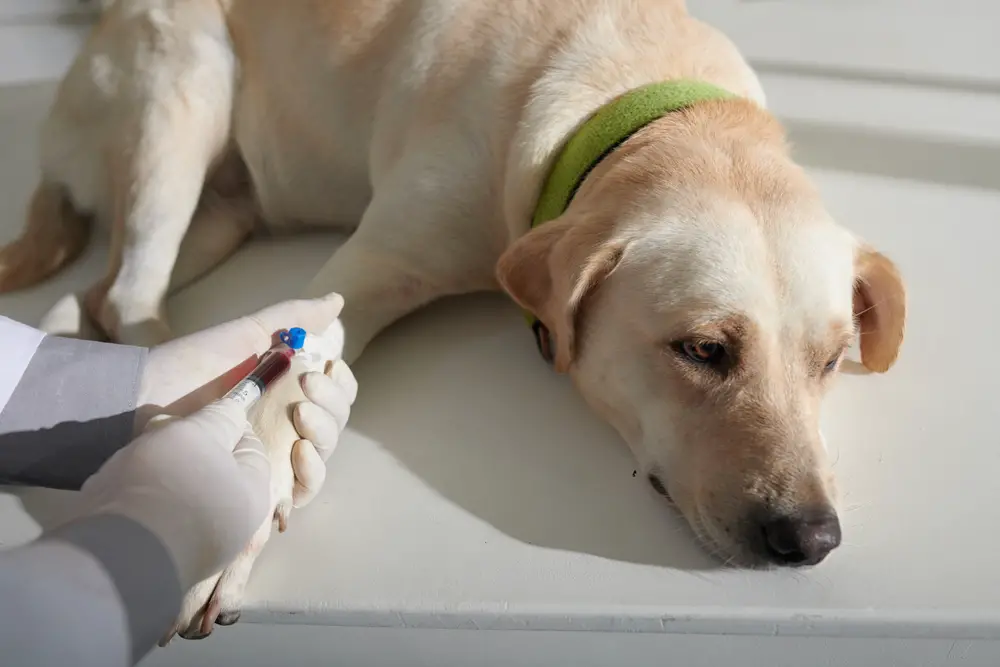
When your pet adorably presses their head against you, it might seem like a sign of affection. However, if your pet frequently presses their head against walls or furniture, it could be a red flag. Head pressing is often associated with neurological issues, including brain tumors or liver disease. It’s crucial not to overlook this behavior, as early detection can make a significant difference in treatment outcomes. A veterinarian can conduct a full examination to determine if there is an underlying issue that needs addressing.
Sometimes, head pressing is confused with head butting, a behavior some pets use to mark territory or show affection. Be vigilant about the context and frequency of head pressing. If you notice your pet seems disoriented or has changes in behavior alongside head pressing, seek veterinary attention immediately. Remember that swift action can help alleviate potential discomfort and lead to better health outcomes for your pet. It’s always better to err on the side of caution when it comes to unexplained behaviors.
5. Purring at Odd Times
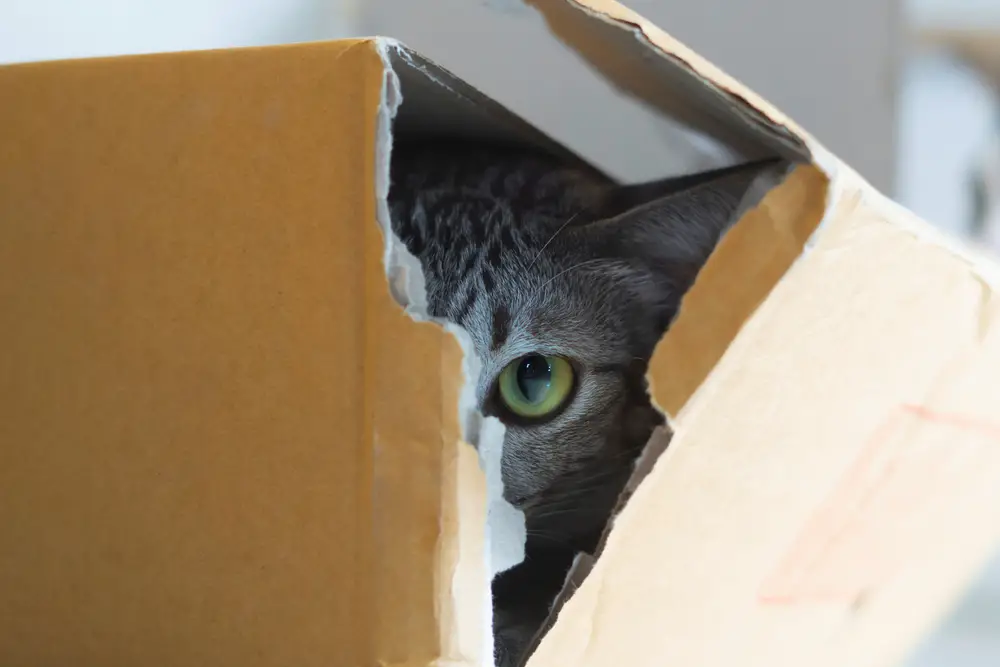
Purring is often interpreted as a sign of a content and relaxed cat, but that’s not always the case. Cats may purr when they’re in pain or feeling distressed, a behavior that’s often misunderstood by their loving human counterparts. According to an article in The Spruce Pets, cats use purring as a self-soothing mechanism, similar to how people might hum to comfort themselves. If your cat is purring during stressful situations or without apparent reason, it might be worth investigating further. Pay attention to other physical cues like body language to get the full picture of your cat’s emotional state.
It’s important to know your cat’s normal behavior patterns to identify when something is off. Consider any changes in their environment that might be causing stress, such as new pets or changes in their routine. Purring accompanied by other signs of distress like hiding or loss of appetite could indicate that something is wrong. Consult with a vet to rule out any medical issues, especially if this behavior is new or out of character. Understanding the nuances of purring can help you better support your feline friend’s well-being.
6. Hiding More Than Usual

It’s normal for pets to seek solitude occasionally, but excessive hiding can be a red flag. If your pet is spending more time under the bed or in secluded areas, it could indicate stress, fear, or health issues. This behavior often suggests that your pet doesn’t feel safe or might be experiencing physical discomfort. Observe if there are specific triggers causing this behavior, such as unfamiliar visitors, loud noises, or changes in the household. Offering a safe and comfortable space can help, but a vet visit may be necessary to rule out any underlying health problems.
In some cases, hiding is a natural response to feeling unwell or in pain. Cats and dogs may instinctively conceal themselves when they feel vulnerable. If this behavior persists, documenting the frequency and circumstances can help your veterinarian make a more accurate diagnosis. Keep an eye on other signs such as changes in appetite, grooming habits, or energy levels. Your observations will be invaluable in helping your vet determine the best course of action for your pet’s well-being.
7. Overly Aggressive Play
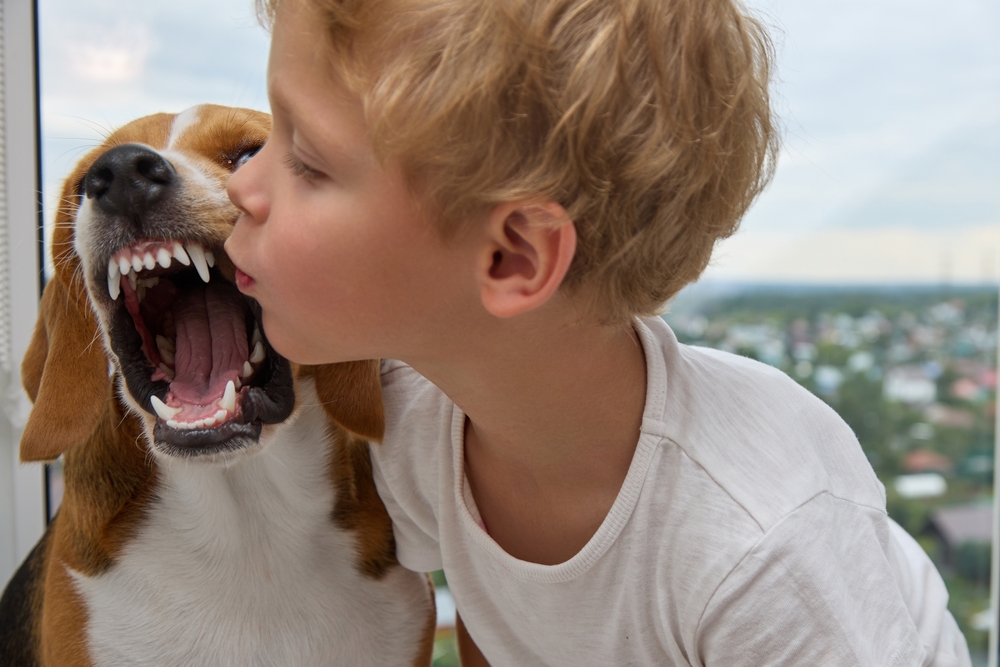
A little roughhousing is normal, but if your pet’s play becomes excessively aggressive, it might be time to reassess. This behavior can signal a lack of socialization or pent-up energy that needs addressing. According to the American Society for the Prevention of Cruelty to Animals (ASPCA), play aggression is common, especially in younger pets who haven’t learned boundaries yet. Training and providing plenty of physical and mental stimulation can help mitigate this behavior. Ignoring it might lead to injury or escalation into more serious aggression as your pet matures.
Understanding the difference between play and aggression is crucial. Watch for signs like growling, biting, or scratching that go beyond typical play behavior. Redirecting their energy through toys or structured playtime can help teach them appropriate ways to interact. If your pet doesn’t respond to these interventions, consider consulting a professional trainer or behaviorist. Socializing your pet with other animals in a controlled environment can also help them learn to play nicely and understand boundaries.
8. Eating Non-Food Items

While it may seem funny when your pet munches on socks or chew on paper, this behavior, known as pica, can be dangerous. Pica can lead to digestive issues and might indicate nutritional deficiencies or anxiety. Pets often eat non-food items when they’re bored, stressed, or lacking certain nutrients. Ensuring a balanced diet and regular vet check-ups can help prevent this behavior. If pica persists, consult your vet to explore underlying causes and solutions.
Supervising your pet and keeping non-food items out of reach is also crucial. Providing plenty of toys and engaging activities can help redirect their attention. Puzzle feeders or treat-dispensing toys can be particularly useful to keep their mind occupied. Consider any recent changes in their environment or diet that might have triggered this behavior. Addressing these factors can help keep your pet safe and healthy while reducing instances of unwanted chewing or swallowing.
9. Unusual Vocalizations
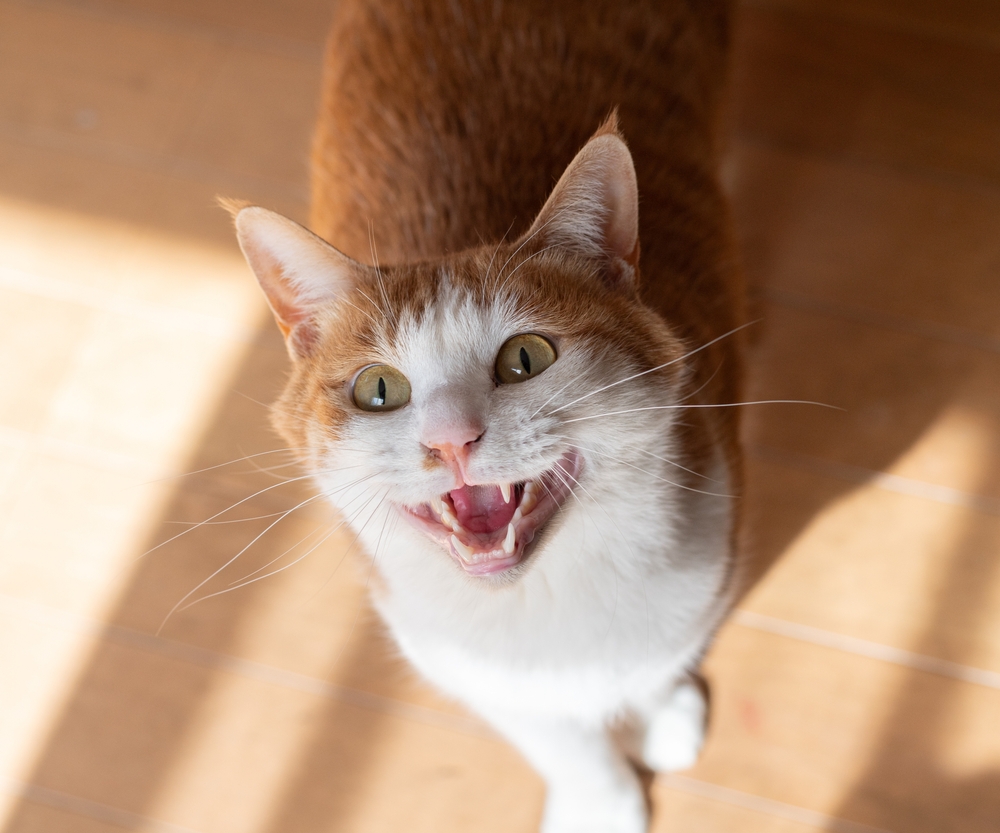
Pets have their unique ways of communicating, but excessive or unusual vocalizations can be a cry for help. If your pet suddenly becomes more vocal or changes the tone of their sounds, it might indicate discomfort or pain. This behavior could also signal loneliness, boredom, or anxiety. Observing when and how these vocalizations occur can provide clues to their root cause. Consulting a vet is advisable if this change in behavior is sudden or accompanied by other signs of distress.
Sometimes, unusual vocalizations are a response to changes in the environment or routine. Pets might become more vocal if they’re feeling neglected or if their needs aren’t being met. Pay attention to whether these sounds occur during specific times, such as when you leave the house or during feeding times. Ensuring a consistent routine and providing plenty of interaction can help alleviate their need to vocalize excessively. Your vet can also help determine if there’s a physical reason behind the change in vocal behavior.
10. Constant Pawing at You

A gentle paw tap might be your pet’s way of asking for attention, but constant pawing can become problematic. This behavior can indicate a need for affection or signal anxiety and insecurity. Pets often paw when they want something, such as food, play, or reassurance. Ignoring or reinforcing this behavior without understanding its cause might lead to increased anxiety. Assess what your pet might need and try to address their concerns without encouraging compulsive pawing.
It’s important to set boundaries while still providing your pet with the attention they need. Engage them in play sessions or training exercises to satisfy their need for interaction. Over time, you can teach them more appropriate ways to communicate their needs. If pawing is accompanied by other signs of stress, consider consulting a trainer or behaviorist. Remember, consistency is key in helping your pet understand what behaviors are okay and which ones are not.
11. Sleeping More Than Usual

While pets sleep a lot, a sudden increase in sleep could signal health issues or emotional distress. If your pet starts sleeping more than usual and seems lethargic when awake, it might be time to consult a vet. This change in behavior can be a sign of underlying conditions such as depression, hypothyroidism, or pain. Monitoring their sleep patterns and energy levels can help determine if there’s a cause for concern. Ensuring a balanced diet and regular exercise can contribute to your pet’s well-being and energy levels.
Sometimes, a change in sleep patterns is a natural part of aging, but it’s essential to differentiate between normal and concerning behavior. Consider any recent changes in your pet’s environment or routine that might be affecting their sleep. Providing a comfortable and quiet sleeping area can also help improve their rest quality. If your pet seems to be in discomfort or shows other signs of illness, a vet visit is recommended. Early detection can lead to better management of any health issues that might be affecting their sleep.
12. Sniffing the Air Continuously

While sniffing is a normal behavior for pets, continuous and frantic sniffing of the air might indicate something more serious. Pets often use their noses to explore their environment, but excessive sniffing can be a sign of anxiety or a medical issue. Pay attention to when and where this behavior occurs to identify potential triggers. If your pet seems distressed or shows other changes in behavior, consulting a vet can help rule out medical causes. Understanding your pet’s body language can also provide clues to their emotional state.
Environmental factors such as new scents or changes in the home can also trigger excessive sniffing. Consider any recent changes that might be affecting your pet’s behavior, such as new cleaning products or visitors. Providing plenty of mental and physical stimulation can help alleviate anxiety-related sniffing. Training exercises that engage their sense of smell, like scent games, can also help channel this behavior positively. Remember, a content and engaged pet is less likely to exhibit behaviors driven by anxiety or stress.
13. Chewing on Paws
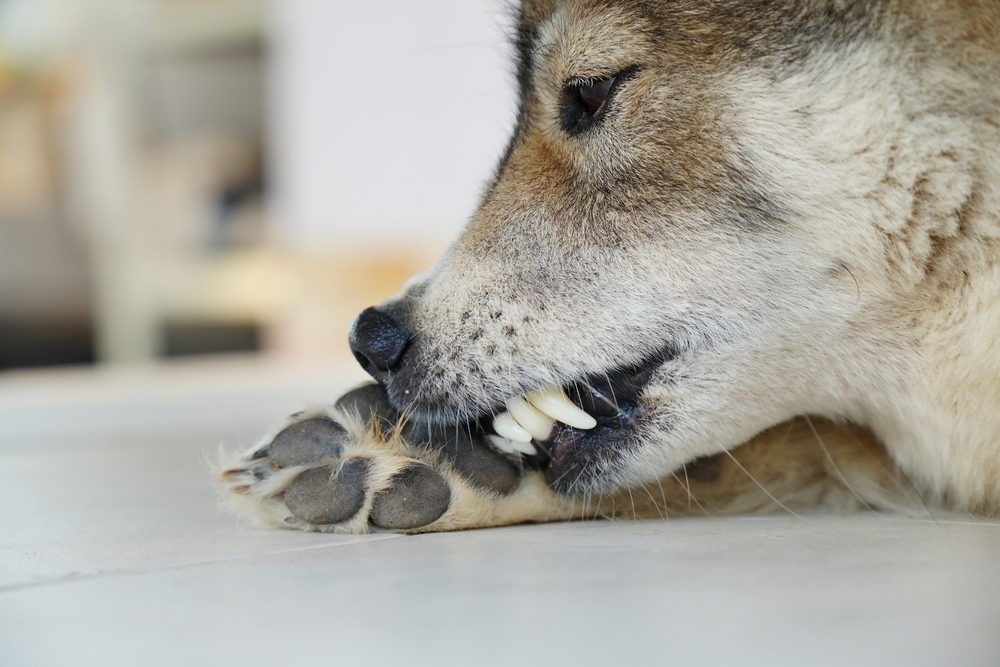
Occasional paw licking or chewing is normal, but excessive chewing can indicate allergies or anxiety. Pets might chew their paws due to itchiness, discomfort, or as a self-soothing behavior. Observe if this behavior is seasonal, as it might be related to environmental allergies. Regular grooming and checking for irritants can help prevent this behavior from escalating. If your pet’s paw chewing is persistent, a vet visit can help identify any underlying issues that need addressing.
Changes in diet or environment can also contribute to paw chewing. Consider any recent changes that might have triggered this behavior and address them accordingly. Providing alternative outlets for your pet’s energy, such as toys or interactive play, can help reduce compulsive behaviors. If anxiety is the root cause, consider implementing calming strategies like pheromone diffusers or behavior modification techniques. Remember, understanding the cause of paw chewing is crucial to providing your pet with the appropriate care and relief.
